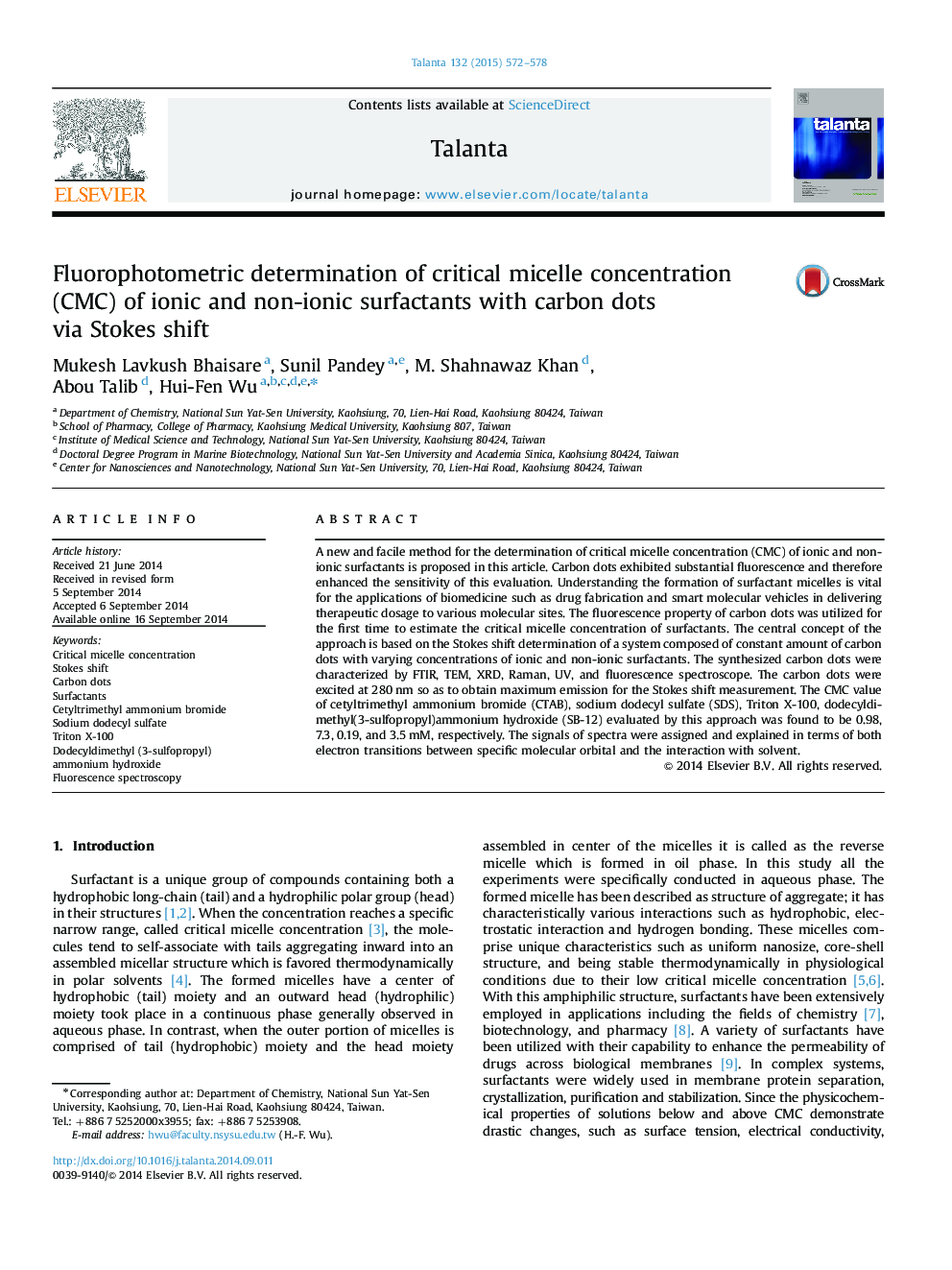| Article ID | Journal | Published Year | Pages | File Type |
|---|---|---|---|---|
| 1242055 | Talanta | 2015 | 7 Pages |
•Synthesis of fluorescent carbon nanodots.•Carbon nanodots first time applied for critical micelle concentration (CMC) determination of surfactants.•Stokes shift versus concentration plot gives CMC value of all type of surfactants.
A new and facile method for the determination of critical micelle concentration (CMC) of ionic and non-ionic surfactants is proposed in this article. Carbon dots exhibited substantial fluorescence and therefore enhanced the sensitivity of this evaluation. Understanding the formation of surfactant micelles is vital for the applications of biomedicine such as drug fabrication and smart molecular vehicles in delivering therapeutic dosage to various molecular sites. The fluorescence property of carbon dots was utilized for the first time to estimate the critical micelle concentration of surfactants. The central concept of the approach is based on the Stokes shift determination of a system composed of constant amount of carbon dots with varying concentrations of ionic and non-ionic surfactants. The synthesized carbon dots were characterized by FTIR, TEM, XRD, Raman, UV, and fluorescence spectroscope. The carbon dots were excited at 280 nm so as to obtain maximum emission for the Stokes shift measurement. The CMC value of cetyltrimethyl ammonium bromide (CTAB), sodium dodecyl sulfate (SDS), Triton X-100, dodecyldimethyl(3-sulfopropyl)ammonium hydroxide (SB-12) evaluated by this approach was found to be 0.98, 7.3, 0.19, and 3.5 mM, respectively. The signals of spectra were assigned and explained in terms of both electron transitions between specific molecular orbital and the interaction with solvent.
Graphical abstractFigure optionsDownload full-size imageDownload as PowerPoint slide
